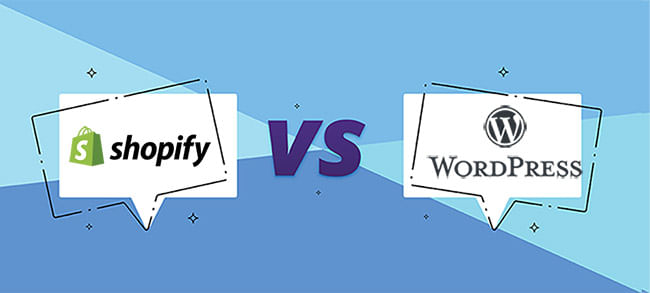
In the world of website creation and e-commerce, Shopify and WordPress have established themselves as leading platforms. Each has its unique features, strengths, and target audience. In this article, we will explore the key aspects of Shopify and WordPress, including their user base, pricing, and functionality. By the end, you will have a better understanding of which platform is better suited for your specific needs.
What is Shopify?
Shopify is a popular e-commerce platform that allows users to create and manage online stores. It offers an all-in-one solution with a user-friendly interface, drag-and-drop functionality, and a range of customizable themes and templates. Shopify takes care of hosting, security, and other technical aspects, making it an ideal choice for beginners or users who prefer a hassle-free setup.
What is WordPress?
WordPress, on the other hand, is a versatile content management system (CMS) that powers millions of websites worldwide. It began as a blogging platform but has evolved into a full-fledged website builder. WordPress provides extensive customization options, flexibility, and a vast library of themes and plugins. It is suitable for users who want full control over their website's design, functionality, and content management.
What sort of users are Shopify and WordPress aimed at?
Both Shopify and WordPress target different types of users based on their requirements and technical expertise.
Shopify Users
Shopify is primarily aimed at users who want a straightforward, all-in-one e-commerce solution. It is ideal for entrepreneurs, small business owners, or individuals who want to quickly set up an online store without worrying about technical aspects like hosting and security. Shopify offers an intuitive interface and ready-to-use templates, making it accessible to users with minimal technical knowledge.
WordPress Users
WordPress caters to a broader range of users, including bloggers, small businesses, large enterprises, and developers. It offers unmatched flexibility and customization possibilities, making it suitable for users who want complete control over their website's design and functionality. WordPress requires more technical knowledge and responsibility for hosting and performance optimization.
How many people use WordPress and Shopify?
Both WordPress and Shopify have a significant user base, but their respective market shares and target audiences differ.
WordPress User Base
WordPress powers approximately 40% of all websites on the internet, making it the most popular CMS globally. It is trusted by individuals, businesses, and organizations of all sizes due to its scalability, versatility, and extensive community support. WordPress's vast user base is a testament to its widespread adoption and the confidence it inspires among website creators.
Shopify User Base
Shopify, while not as ubiquitous as WordPress, is a dominant player in the e-commerce space. It currently powers over a million online stores and has a strong presence in the e-commerce industry. Shopify's user base comprises entrepreneurs, small businesses, and established brands looking for a reliable and user-friendly platform to sell products online.
Pricing: how much does it cost to use Shopify and WordPress?
Pricing is an important consideration when choosing a website platform. Let's explore the pricing models of Shopify and WordPress.
Shopify Pricing
Shopify offers various pricing plans to accommodate different business needs. Its plans include Shopify Lite ($9 per month), Basic Shopify ($29 per month), Shopify ($79 per month), and Advanced Shopify ($299 per month). Additionally, Shopify charges transaction fees for using external payment gateways instead of their native Shopify Payments. The pricing plans come with different features and limitations, allowing users to choose the plan that best suits their requirements and budget.
WordPress Pricing
WordPress itself is free to use as it is open-source software. However, you will need to purchase a domain name and web hosting to get your WordPress site up and running. The cost of hosting varies depending on the hosting provider and the specific plan you choose. Additionally, premium themes and plugins may have associated costs, although there are numerous free options available. WordPress offers flexibility in terms of budget as users have control over the expenses based on their hosting and plugin choices.
Conclusion
In the battle between Shopify and WordPress, there is no definitive answer to which platform is better. Both have their strengths and cater to different user needs. Shopify excels in providing an all-in-one e-commerce solution with a user-friendly interface, while WordPress offers unparalleled flexibility and customization options. Your choice between the two platforms will ultimately depend on your specific requirements, technical expertise, and budget. Evaluate your needs and weigh the pros and cons of each platform to make an informed decision that aligns with your goals and aspirations. At shopifybuilder Shopify design services are unique and outstanding for being entirely customer focused. The visual appeal of the websites is based entirely on your default customer profile, which optimizes your website for conversions.
